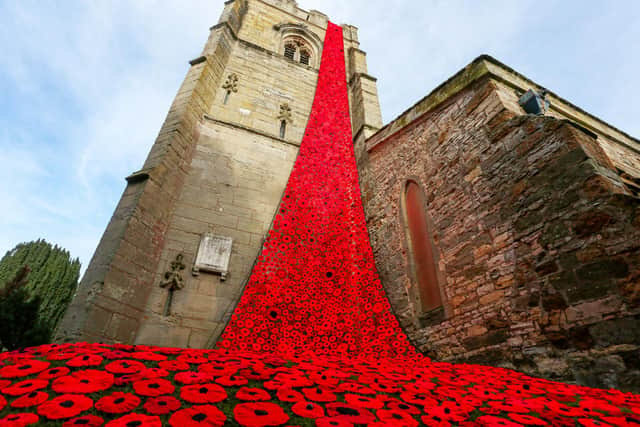Why do we wear poppies? The meaning behind the Remembrance Day symbol
This article contains affiliate links. We may earn a small commission on items purchased through this article, but that does not affect our editorial judgement.
and live on Freeview channel 276
Now November is here, we will likely see more poppies pinned to the jackets and coats people wear while out and about. And this year, the poppies have been given an environmentally-conscious touch as they will be plastic-free.
This was the first time the poppy had been redesigned in decades to remove plastic elements such as the stem and the black circle in the middle. You're also likely to see the poppy worn by presenters and pundits on TV as a mark of respect around this time of year.
Advertisement
Hide AdAdvertisement
Hide AdThis year will be the 102st year poppies have been the official symbol of Remembrance Day. The Royal British Legion (RBL) - who organise the annual poppy appeal - have stuck with the symbol which has origins back to World War I.


Why do we wear poppies?
People can usually be seen wearing poppies in the run-up to Remembrance Day and Remembrance Sunday and on the two commemorative days. The red poppy is a symbol of remembrance and hope for a peaceful future, and is worn as a show of support for the Armed Forces community. The Royal British Legion website said: “The poppy is a well-known and well-established symbol, one that carries a wealth of history and meaning with it.”
The origins of the poppy lie in the opening lines of the war poem ‘In Flanders Field’ by Canadian officer John McCrae, which was first published in December 1915. The poem reads: “In Flanders fields the poppies blow, between the crosses, row on row.”
The flower was then adopted as a symbol by the newly-formed Royal British Legion and continues to be worn in remembrance today, with the Legion organising the Poppy Appeal each year.
Advertisement
Hide AdAdvertisement
Hide AdDuring the First World War, much of the fighting that occurred took place in Western Europe, where the countryside was repeatedly bombed and fought over. What were once beautiful landscapes turned to dirt, where very little would grow.
However, red Flanders poppies thrived in the churned-up soil, and thousands flourished. McCrae’s poem went on to inspire American humanitarian Moina Michael, who campaigned to make the poppy a symbol of remembrance for those who had died in the war. In 1918, she wrote her poem We Shall Keep the Faith.
In We Shall Keep the Faith, Michael wrote: “And now the Torch and Poppy Red, we wear in honour of our dead.”
The first artificial poppies were sold in the UK in 1921, by Anna Guérin, a French woman who persuaded Earl Haig, the founder of the RBL, to adopt the poppy as its emblem.
Poppies are available to buy at major supermarkets and the RBL website.
Comment Guidelines
National World encourages reader discussion on our stories. User feedback, insights and back-and-forth exchanges add a rich layer of context to reporting. Please review our Community Guidelines before commenting.
